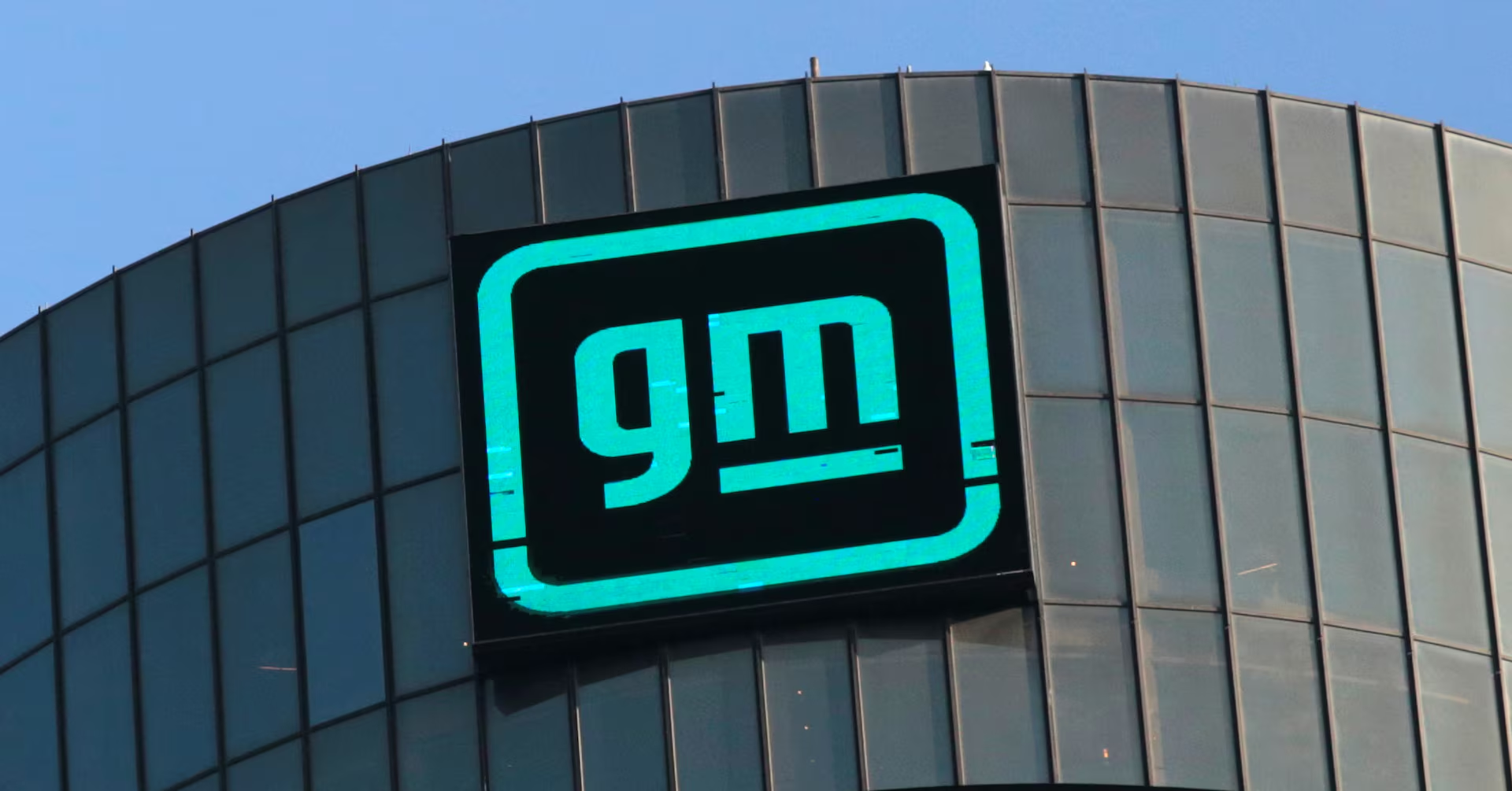Initially, Liverpool appeared to struggle with the system and once again their defensive frailties were exposed as they were cut open by a sweeping Eintracht Frankfurt counter for the opener.
Liverpool have now conceded 18 goals in 13 games this…

Initially, Liverpool appeared to struggle with the system and once again their defensive frailties were exposed as they were cut open by a sweeping Eintracht Frankfurt counter for the opener.
Liverpool have now conceded 18 goals in 13 games this…

Item 1 of 2 The new GM logo is seen on the facade of the General Motors headquarters in Detroit, Michigan, U.S., March 16, 2021. Picture taken March 16, 2021. REUTERS/Rebecca Cook
WASHINGTON, Oct 22 (Reuters) – A group representing nearly all major automakers on Wednesday urged the administration of President Donald Trump not to impose tariffs on factory robots and machinery.
Sign up here.
“Increasing the cost of equipment at existing facilities will raise overall production costs for automotive manufacturers, could cause production delays, and may result in vehicle shortages and higher vehicle prices on American consumers at a time when new vehicle prices are already at historic highs,” the group wrote in comments made public Wednesday.
The auto group cited a study showing that about 40% of all robotics and industrial machinery installations in the U.S. in 2024 were in automotive production facilities. Automakers said if the administration imposes tariffs, it should exempt robots used in U.S. production.
The White House did not immediately respond to a request for comment.
Several foreign governments including China, Canada, Japan, Switzerland and the European Union filed comments opposing the tariffs.
In addition, tariffs and shortages will drive up costs and consumer prices, warned the National Retail Federation, which added that its members are increasingly using robotics in stores, warehouses and distribution centers.
The U.S. Chamber of Commerce said some critical machinery is only produced abroad, including equipment for extreme ultraviolet lithography used for semiconductor manufacturing. Tariffs could “undermine the very domestic semiconductor manufacturing capacity the administration seeks to build,” the business group said.
Reporting by David Shepardson; Editing by Chris Reese and Lisa Shumaker
Our Standards: The Thomson Reuters Trust Principles.

Women who followed a Mediterranean-style eating pattern had up to 94% lower odds of endometriosis, suggesting that plant-based, nutrient-dense diets may help reduce inflammation and support reproductive health.
Study: Mediterranean…

Scientists at ARUP Laboratories have developed an artificial intelligence (AI) tool that detects intestinal parasites in stool samples more quickly and accurately than traditional methods, potentially transforming how labs diagnose…
A study published in the BMJ looks at the impact of sugar rationing and long term cardiovascular…

NASA’s Perseverance robot, depicted here landing on the Martian dunes, used its cutting-edge cameras to image what could be the first evidence of life ever detected on Mars, opening the possibility that the Milky Way “could be teeming with life.”…

Just days after announcing a price hike, HBO Max has revealed a new feature that will allow users to rate content, feedback that the service says will help it personalize customers’ feeds.
“The update is designed to improve…

The weight-loss drug semaglutide cuts the risk of heart attack or stroke regardless of how many kilograms people lose, the largest study of its kind has found.
However, shrinking waist size – a sign of less belly fat – was linked to better…
This request seems a bit unusual, so we need to confirm that you’re human. Please press and hold the button until it turns completely green. Thank you for your cooperation!

By Christine Idzelis
DWS’s George Catrambone cautions that long-term rates risk rising should CPI inflation data come in hot – and that other government reports are missing from the picture due to the shutdown
The 10-year Treasury yield declined Wednesday to its lowest level since last October, according to Dow Jones Market Data.
Investors are bracing for an upcoming reading on inflation from the Bureau of Labor Statistics – a crucial piece of the U.S. economic picture in an otherwise vacuum of government data during the shutdown.
Treasury bond yields have fallen this month as investors navigate a U.S. government shutdown that has dragged on since Oct. 1 and are left to make decisions without the usual batch of closely watched economic reports. But on Friday, the BLS will release a delayed report on September inflation data via the consumer-price index (CPI), even as the shutdown means investors are missing other readings on the economy from the government.
“The market is jittery in the absence of hard data” that it’s used to seeing to provide “some picture of the direction of the U.S. economy,” said George Catrambone, head of fixed income at DWS Group, in a phone interview Wednesday. “If you have a hot CPI print, you could see a little bit of a backup in long-end yields” in the bond market, he said – adding that this month’s missing jobs report complicates the situation for investors and “could create a bit more risk.”
The BLS had been scheduled to release a U.S. jobs report covering September in early October, but it did not due to the government shutdown. The continuing shutdown also means government workers aren’t collecting new information for next month’s jobs report that would cover October, according to Catrambone.
“We are not getting regular data dumps as we would,” he said. “CPI on Friday is going to be helpful, but it’s really only one piece of the puzzle,” Catrambone added.
The yield on the 10-year Treasury note BX:TMUBMUSD10Y fell 1 basis point Wednesday to 3.952%, the lowest level since Oct. 3, 2024, based on levels at 3 pm. Eastern time, according to Dow Jones Market Data. Bond prices climb when yields fall.
‘Near-term risk event’
“We see further scope for 10- and 30-year BX:TMUBMUSD30Y rates to decline” during the fourth quarter, “but maintain that a consolidative sideways shuffle is the path of least resistance as investors await the near-term event risk in Friday’s release of the September CPI report,” said Ian Lyngen, head of U.S. rates strategy at BMO, in a note Wednesday.
“The U.S. rates market continues to hold the recent bond bullish price action, demonstrating an impressive underlying bid,” he said. “The growing list of economic uncertainties has reinforced the case for adding duration exposure at current levels – or at least covering any lingering shorts.”
The 10-year Treasury yield has fallen this year to date, with its recent drop reflecting a “flight to safety” that’s partly tied to credit concerns that emerged at regional banks, said Catrambone. To his thinking, a drop below 3.75% on the 10-year Treasury yield would indicate that investors are questioning whether the U.S. economy will see a “soft landing.”
While the U.S. economy has continued to expand, the slowdown in jobs growth has worried investors. Downside risks to the labor market prompted the Federal Reserve to cut interest rates in September, even as inflation remained above its 2% annual target.
Investors anticipate the Fed will cut its benchmark rate again next week. That expected move should probably keep short-term Treasury yields “fairly well anchored” around the current level, even if long-term rates were to climb on a potentially hotter-than-expected inflation report, according to Catrambone.
The 2-year Treasury yield BX:TMUBMUSD02Y, which is sensitive to the Fed’s policy rate, slipped 1 basis point Wednesday to 3.444%, according to Dow Jones Market Data.
After recently taking profits on the long end of the Treasury market’s yield curve, DWS turned more “neutral” on it, according to Catrambone. “We’re equal weight across the curve,” he said.
Economists at Goldman Sachs expect Friday’s CPI report will show that inflation rose 0.33% in September for a year-over-year rate of 3.02%, according to their research report dated Oct.18. They forecast that core inflation, which excludes food and energy prices, increased 0.25% last month to climb 3.05% year over year.
The CPI report was originally scheduled to be released on Oct. 15.
“While most government data releases – including the CPI – are suspended until the end of the shutdown, the September CPI will be published to allow the Social Security Administration to calculate cost-of-living adjustments on time,” the Goldman economists noted.
-Christine Idzelis
This content was created by MarketWatch, which is operated by Dow Jones & Co. MarketWatch is published independently from Dow Jones Newswires and The Wall Street Journal.
(END) Dow Jones Newswires
10-22-25 1828ET
Copyright (c) 2025 Dow Jones & Company, Inc.